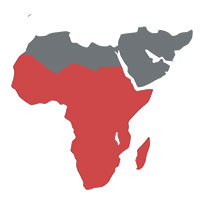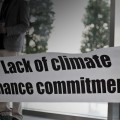COP22: Time for Active Ambition
Daniel V | November 7, 2016.
The Paris Agreement has just entered into force. Agreed last year, perhaps its most important legacy is its stated ambition: for governments to pursue efforts to keep temperatures below 1.5°C of warming above pre-industrial levels.
For many at the forefront of climate ferocity, the abstract target of 1.5°C has embodied an unbreachable guardrail; the line of “safety” in the sand.
The last year has fortified two realities. On one hand, we see the intensifying urgency and human tragedy of the climate crisis. Heat waves, fires, super-storms, and the slow violence of environmental degeneration. Weather records are being obliterated.
On the second hand, we see the lethargy of governments, with many entrenching the drivers of unchecked emissions. A case in point is the UK, which since the Paris summit has pushed high-carbon fracking, brokered bilateral fossil fuel partnerships, and approved the expansion of the one of the world’s busiest airports.
Globally, things are bleak: a firm plan for limiting emissions from the shipping industry, a major contributor to emissions, is now postponed until 2023. Published studies have warned of significant undercounting in international emission tallies, with failures to fully account for emissions from hydropower and sewage plants.
In Marrakech, ramping up the ambition of states will be essential. The recent Emissions Gap Report by the United Nations Environmental Programme has shown that under current pledges, the world is on track for 3.4°C of warming. The arithmetic is brutal.
Countries’ stated commitments make up less than half of the cuts needed to meet the goals established in Paris. The report adds that, “all scenarios consistent with the 1.5°C target imply that global greenhouse gas emissions peak before 2020.” In other words, we now have only three years for a world that is only 1.5°C warmer to be a reality.
For that to happen, what is known as “pre-2020 action” has to increase, as do commitments for post-2020 action. In Paris, a “global stocktake” was agreed—a mechanism which will allow parties to assess progress towards their shared goals, and raise ambitions over time. But the first proper stocktake will only take place in 2023, with an interim 2018 “facilitative dialogue” to layout the framework for the 2023 meeting.
Scientists are also concerned that the need for ambition is being diluted in the negotiations through “magical thinking” on negative emissions. Many of the models used to draw up climate action plans incorporate a belief that technologies that suck carbon from the air in the future will compensate for an absence of emission reductions today. Miguel Arias Cañete, the EU climate chief, has suggested staying below 1.5°C depends on such technologies, but researchers have criticised them for their potential implications for food security, and for enabling policy-makers to avoid taking ambitious action today.
Further, the raising of ambition is intimately linked to issues that have proven to be recurring schisms in the negotiations:
- Equity (who must do what?),
- Finance (who must foot the bill, and by how much?) and,
- Adaptation (how do we adjust to the climate impacts we’re already seeing?).
Many developing states and civil society observers worry that in the rush of urgency, core principles of historical responsibility and justice are being eroded.
Morocco has been billed as a summit of implementation, where the practicalities behind Paris’ aspirations will be discussed and defined. How ambition will emerge from COP22 remains to be seen, but it may be Marrakech’s most significant legacy.













comment